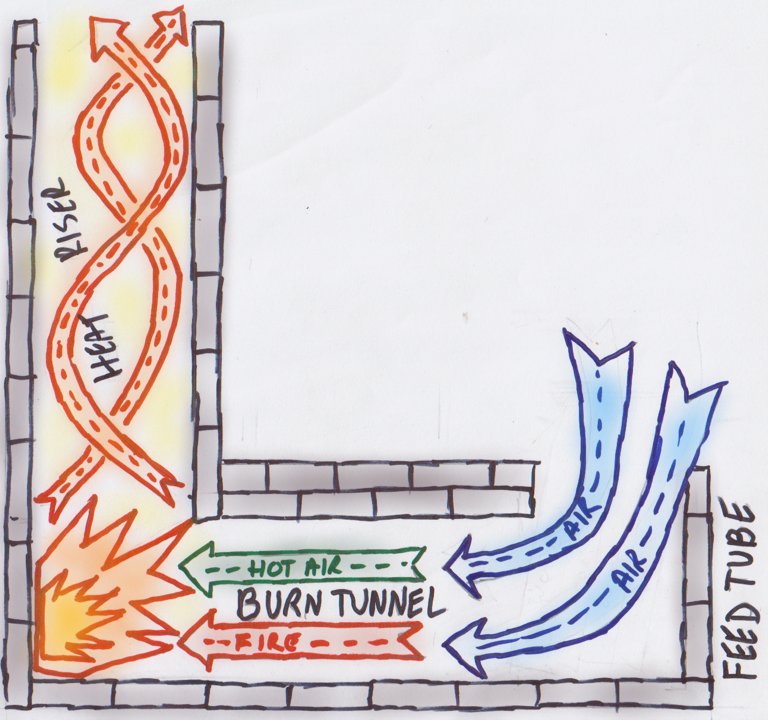So I had a brickwork issue with the rocket stove that has resulted in me deciding to do some surgery and determine how well this thing has been running. The “manifold” area is badly designed and now that I understand basic masonry and high-temperature gas-flow behaviour, I can clearly see it needs to be replaced.
So, I broke the adobe up with a hammer and chisel to be able to lift the barrel cover off. Anywhere within 60mm / 2.1″ that the adobe had come in contact with either the exhaust gasses or the steel of the barrel cover was functionally soft-fired brick. It needed the masonry chisel to remove. That was pretty surprising to me. I hadn’t really considered that a possibility.
There was surprisingly little ash in the manifold area, and the inside of the steel barrel cover looked fine. Plenty of carbon black, but nothing else.
The top “collar” of fire-bricks in the heat riser however, had an unexpected surprise. Essentially, the high-temperature masonry cement was almost 75% eroded / failed. For perspective, that cement is rated to temperatures up to just shy of 1100C / 2000F.
Now, over the winter, I have had the barrel cover at 900F for an few one-hour burns. It did not occur to me that might mean the “muzzle temperatures” of the RMH core had reached somewhere between 2x and 3x that high.
I’ll post some pictures of what everything looks like as well as more specific details about the two failure points I’m going to be repairing and what I’ve learned as a result. However, I figured a brief update now about the kinds of temperatures that even an “amateur” / “first try” design can reach was worth posting.
Cheers, and feel free to reply with questions and comments in the area below. I’d love to hear from you.

Awesome, thanks for sharing 🙂